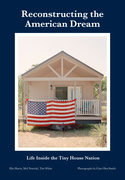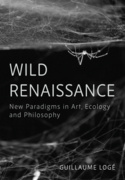Let's Talk about Critique (Book)
Reimagining Art and Design Education
Explores the tradition of critique in art and design education. It contextualizes current practices and suggests ways to have more open, inclusive and dynamic classroom conversations about art and design. The centerpiece is a collection of alternative critique approaches developed by experienced arts educators. 5 b&w diagrams.
Edition
This book explores the tradition of critique in art and design education. It examines how critique, as a signature pedagogy in the field, has evolved, how it falls short, and what else it can be. Current practices are contextualized and suggestions are made for ways to have more open, inclusive and dynamic classroom conversations about art and design. Included is a discussion of the history of critique, grounding current practice in the discipline’s history, the field of education, and characteristics of contemporary students.
The book is designed to be useful, with an array of critique methods, written by experienced arts educators. Each one guides the reader through a method, describing “why you might do it this way” and “for what group, purpose, or type of assignment”. The text explores what the art critique is, and what it can be, offering practical, updated approaches for faculty and students seeking more educationally beneficial and nuanced critique
Elissa Armstrong is an associate professor in the Department of Craft/Material Studies, Virginia Commonwealth University School of the Arts and her research focuses on art and design pedagogy and a ceramic studio practice. She received her MFA in ceramics from Alfred University; her BFA in ceramics from the Nova Scotia College of Art and Design; her BA in English literature and art history from Queen’s University; and her B.Ed. in English literature and visual arts from the University of Western Ontario.
Mariah Doren is the assistant provost for curriculum and learning at The New School, with a research practice that focuses on both art and design pedagogy and a studio practice that includes collage work combining photographs, printmaking, and drawing. Mariah has a Doctorate, College Teaching of Art and Design from Columbia University, an MFA in photography from Pratt Institute, and a BA from Bryn Mawr College.
List of Figures
List of Tables
Acknowledgements
Introduction
1. What Is a Critique?
2. The Critique’s History: How the Contemporary Critique Evolved
3. The Contemporary Student and the Critique
4. Critique And Assessment
5. Critique Methods Collection
- I: Non-verbal critiques
- Yun Shin and Emily Stokes
- Elissa Armstrong
- Nida Abdullah and Denise Gonzales Crisp
- Chelsea Coon
- Mariah Doren
- Susan Jahoda and Caroline Woolard
- II: Play and improvisation critiques
- Carol Elkovich
- Nida Abdullah and Denise Gonzales Crisp
- Jonathon Russell
- Laurie Gatlin
- Tyrus Clutter
- Jonathon Russell
- III: Pre-, mid-, post- and extended critiques
- Ane Gonzalez Lara
- Susan Jahoda and Caroline Woolard
- Leslie Bellavance
- Susan Jahoda and Caroline Woolard
- Elissa Armstrong
- Hannah Barnes
- IV: Student-centered critiques
- Gaia Scagnetti and T. Camille Martin-Thomsen
- Denielle J. Emans and Kelly M. Murdoch-Kitt
- April Friges
- Andrea Marpillero-Colomina
- Kristina Bivona
- nicole killian
- Hande Sever and Alexandre Saden
- melissa m button, Matt Nock, and Phil Stoesz
- V: Critique of critiques
- Mariah Doren
- Maya Krinsky
- Andy Broadey and Richard Hudson-Miles
- Matt King
- Morgan Alford, Alia Ali, Naama Attias, Julia Chai, Casey Chan, Jiayun Chen, Yingtong He, Ashley Hunt, Kaidi Jiu, Keunjae Kwon, Michael Mendoza, Oscar Ochoa, Alexeis Reyes, Ruoyi Shi, Estela Ana Silva, Allison Yasukawa, and Hanzhu Zhang
Conclusion
References
Notes on Contributors
"Let’s Talk about Critique includes a variety of ways to look at and talk about work, pushing beyond the stale traditions and enlivening the possibilities for what can happen in discussing art. Armstrong and Doren provide a very thorough history and critique of the critique, as well as solutions to the inadequacies of the past traditions. The book meets an important need, evolving the critique from an authority/judgment model to a dialogue where all voices are respected and content meaning is addressed."
“In Let’s Talk about Critique, Armstrong and Doren make a compelling case for the necessity of different studio critiques within contemporary higher education. This book is an extensive and diverse catalogue of innovative studio critiques, explores the history of the studio critique, and discusses recent studies on Generation Z.”














